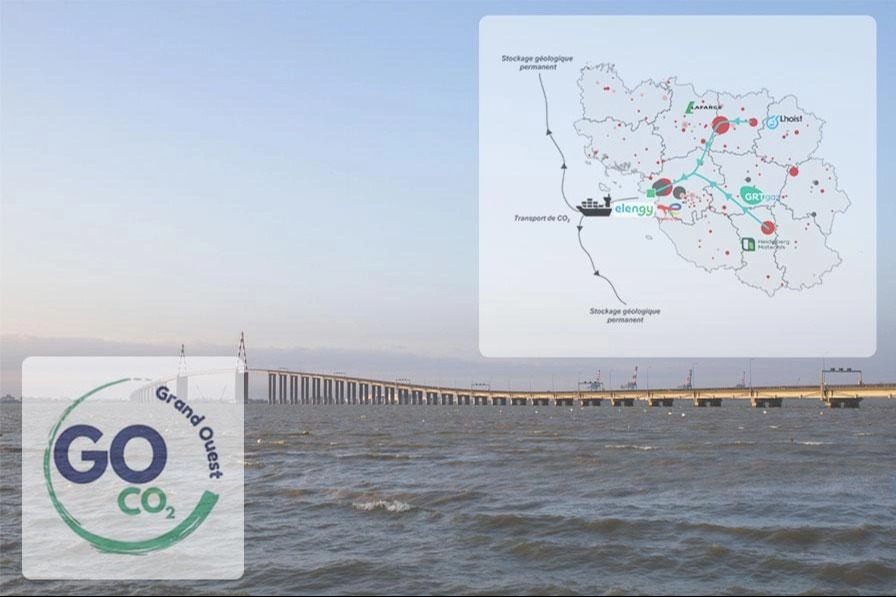France’s main gas transmission operator, GRTgaz, and Elengy, the country’s liquefied natural gas (LNG) terminal operator, have launched feasibility studies for their proposed Grand Ouest CO2 (GOCO2) project aiming to capture and transport industrial CO2 emissions from French Pays de la Loire and Grand Ouest regions.
This follows a call for expression of interest to develop a network for transporting CO2 covering multiple territorial units in France, known as departments, and a CO2 liquefaction and export terminal at the Montoir-de-Bretagne LNG terminal launched by the two companies in March.
The call targeted all players interested in creating a new CO2 value chain, including those with carbon capture and storage (CCS) projects and carbon capture and utilization (CCU) projects up to 2030.
“CO2 capture and storage will be a key factor in attracting industry to countries that offer suitable logistics. Our ability to plan infrastructure now with public and private players, to meet all the region’s needs, is a guarantee of success for the future,” noted Sandrine Meunier, CEO of GRTgaz.
In addition to five firms – three historical CO2 emitters, partners in GOCO2, and two new industrial players – that have committed to continue developing the project up to 2030, ten other companies have indicated a potential interest in CO2 projects beyond 2035.
Elengy believes this confirms the industry’s need for CO2 transport, liquefaction, and export infrastructure in the Greater West of France. The project also aims to support the development of CO2 recovery projects, especially for the production of synthetic fuels.
Nelly Nicoli, Elengy’s CEO, said: “This result confirms our strategic commitment to developing concrete decarbonization solutions for industry and thus contributing to the emergence of a CO2 capture, storage and utilization chain in France.”
The partners have now confirmed the launch of pre-FEED studies, which will entail establishing the transmission infrastructure and terminal’s dimensions and assessing their cost and the regulatory and environmental issues involved in integrating them into relevant areas. Detailed engineering studies are expected to start in 2025.
Launched in July 2023, GOCO2 is described as the largest decarbonization project in western France in terms of the volume of CO2 captured and transported. The goal of the project, which was identified as a priority project in the French government’s CCUS strategy, is to develop an investment program to capture the CO2 emitted by industrial sites for pipeline transport to the Saint-Nazaire maritime export terminal, where it will be stored in permanent geological structures.
The estimated capacity will be 2.6 million tonnes annually by 2030, which can be expanded up to 4 million tonnes of CO2 per year by 2050. The latter is said to be more than 75% of the Grand Ouest region’s industrial emissions at the moment.
The partners’ plan for the future includes using the project to transport CO2 emissions from other manufacturers in the Grand Ouest region, or biogenic CO2 resulting from the biomethane purification process. They also believe decarbonization infrastructure will attract new industrial sites to the area.
Last month, GRTgaz signed a deal with Norway’s Equinor to transport captured CO2 from industrial emitters in France to permanent storage offshore Norway. This will be done through the planned CO2 Highway Europe pipeline project, which is also meant to connect Zeebrugge, Belgium, to several storage sites under the seabed off the coast of Norway.

